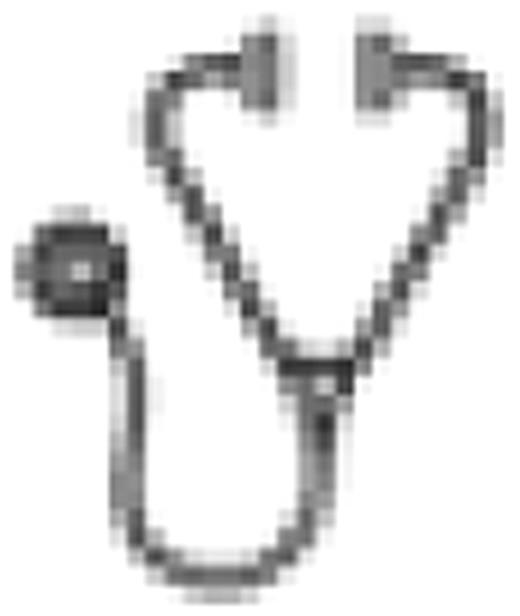Abstract
Poster Board II-606
Single nucleotide polymorphism array (SNP-A) karyotyping improves detection of chromosomal defects in myeloid malignancies, including acquired somatic uniparental disomy (AS-UPD). AS-UPD comprises ∼30–35% of new lesions in acute myeloid leukemia (AML) and myelodysplastic syndromes (MDS). To date, impact of AS-UPD on treatment responses and clinical outcomes has not been established. We hypothesized that AS-UPD is a clinically and prognostically important chromosomal lesion in MDS and associated myeloid neoplasms. To that end, we studied bone marrow (BM) from 403 patients using Affymetrix 250K and 6.0 SNP-A: 235 MDS, 80 MDS/ myeloproliferative neoplasms (MPN), 8 idiopathic myelofibrosis (IMF), and 80 AML that evolved from MDS (sAML). Median follow up was 23 months. All gains and deletions with >50% overlap with copy number variants (CNVs) in our internal control (N=1003) and publicly-available databases were excluded. We also excluded germ line, non-clonal regions of homozygosity (ROH) defined by criteria established through analysis of our control cohort. ROH were present in 12% of controls. Based on 95th percentile for interstitial and telomeric locations, ROH <24Mb and <7.4Mb, respectively, were excluded. Clinical parameters measured included survival outcomes (overall [OS], event free [EFS], and progression free [PFS] survival) analyzed using the Kaplan-Meier method. The two sided Fischer's-exact test were used for categorical comparisons. The Cox-proportional hazards model was used to assess univariate and multivariate analyses for OS, PFS, and EFS; factors assessed included age (≥60 vs. <60 years), BM blasts (≥5 vs. <5 %), number of cytopenias (≥2 vs. <1), metaphase cytogenetics (MC) risk groups using International Prognostic Scoring System (IPSS) criteria (good, intermediate, poor) and AS-UPD (with lesions vs. no lesions). Each variable was retained in the multivariate model regardless of its statistical significance or lack thereof. Only variables with p<.05 in multivariate analysis were considered significant. AS-UPD accounts for 30%, 32%, 31% of lesions in MDS, MDS/MPN and sAML, respectively. Sole AS-UPD was seen at >5% for chromosomes 1, 4, 6, 7, 9, 11, 17, 21, while 2 and ≥3 lesions occurred at 8.1% and 12.1%. Regardless of prior MC and type of myeloid neoplasm, patients with AS-UPD had worse OS [11 vs. 24 mo, p=.0004], PFS [15 vs. 33 mo, p=.0004], and EFS [13 vs. 21 mo, p=.003] compared to those with no AS-UPD. Patients with normal MC and AS-UPD had inferior survival outcomes (OS [13 vs. 45 mo, p=.002], EFS [13 vs. 28 mo; p=.004, PFS [14 vs. not reached {NR}; p=.01], as did those with AS-UPD and non-informative MC (OS [7 vs. 17 mo, p=.01], EFS [5 vs. 17 mo, p=.002], PFS [4 vs. 40 mo, p=<.0001]. When patients were stratified according to disease types, patients with AS-UPD had a worse OS [17 vs. 46 months; p=.02] in MDS; OS [3 vs. 5 mo, p=.01], PFS [3 vs. 7 mo, p=.0002], and EFS [3 vs. 6 mo, p=.03] in sAML. When patients were grouped according to WHO classification, the presence of AS-UPD conferred worse outcomes in low risk (OS [35 vs. 81 mo, p=0.05]) and high risk patients (OS [5 vs. 9 mo, p=.006], PFS [4 vs. 11 mo, p=.002], and EFS [4 vs. 8 mo, p=.004]). When individual AS-UPD lesions were analyzed, the worst OS was seen in patients with AS-UPD involving chromosomes 5(3 mo), 7(3 mo),13 (2 mo), 14 (3 mo), 16 (4 mo), 17 (3 mo) , 21(5 mo), and 22 (3 mo). AS-UPD also influences responses and outcomes related to treatment types. Overall response (CR + PR + HI) rates were worse in patients with AS-UPD (26% vs.42%, p=.003). Patients with AS-UPD treated with low intensity chemotherapy (LIC [lenalidomide, 5-azacitidine, decitabine, arsenic, thalidomide]) [6 vs. 16 mo, p=0.01] and allogeneic BM transplantation/intensive chemotherapy [6 vs. 14 mo, p=.09] have worse OS compared to those with no AS-UPD. In multivariate analyses, presence of AS-UPD (OS [HR=1.66, p=.01]; EFS [HR=1.5, p=.04]), BM blasts ≥5% (OS [HR=2.24, p=<.0001]; EFS [HR=2.04, p=.0001]), and poor risk cytogenetics by MC (OS [HR=1.57, p=.0002]; EFS [1.58, <.0001]) were poor predictors of both OS and EFS in MDS, MDS/MPN and sAML while age ≥60 remain a poor predictor of OS (HR=1.52, p=.01). In conclusion, AS-UPD is a chromosomal defect commonly seen in patients with MDS, MDS/MPN and sAML. The presence of AS-UPD influences treatment responses and outcomes to LIC and BMT/IC. More importantly, AS-UPD is an independent predictor of OS and EFS in myeloid malignancies.
Advani:Cephalon: Research Funding.

This icon denotes an abstract that is clinically relevant.
Author notes
Asterisk with author names denotes non-ASH members.

This feature is available to Subscribers Only
Sign In or Create an Account Close Modal